Better-For-You Food and Drink – Where is it All Going?
22 Oct 2013Far from being a tired concept of yesteryear, better-for-you (BFY) foods and beverages are maintaining a steady growth trajectory. Euromonitor International’s latest data show that BFY products are heading for global value sales of almost US$161 billion in 2013. Growth forecasts, however, are a tad more moderate. The “Scandinavian diet” trend, for one, might start […]

Far from being a tired concept of yesteryear, better-for-you (BFY) foods and beverages are maintaining a steady growth trajectory. Euromonitor International’s latest data show that BFY products are heading for global value sales of almost US$161 billion in 2013. Growth forecasts, however, are a tad more moderate. The “Scandinavian diet” trend, for one, might start to spread beyond Northern Europe to threaten reduced-fat packaged foods. In addition, in order to boost long-term growth of reduced-sugar carbonates and public health, manufacturers would perhaps do well to lower price points in emerging economies.
Good performance in 2013
After a slight lull in growth rates in 2012, the BFY category is gaining some dynamism once again. Globally, BFY reduced-sugar beverages are set to muster a 6% value gain in 2013, both reduced-sugar and reduced-fat packaged food 4% and BFY reduced-salt a more modest increase of just over 3%.
BFY products are not just a way of amplifying individual consumer choice – they have the potential to positively impact public health. According to a meta-analysis published in the British Medical Journal (BMJ) early this year, reducing dietary sugar intake to less than 10% of total energy would be a useful contribution to combating the global obesity epidemic.
Sugar has long been in the doghouse as a provider of nothing but empty calories. Soft drinks, and in particular carbonates, are constantly under fire for providing no nutrition at all in terms of vitamins, minerals or other micronutrients, while fuelling “globesity”.
Substituting standard carbonates for reduced-sugar versions is one of the most obvious ways for consumers to reduce their sugar intake. Globally, reduced-sugar carbonates are set to account for 15% of overall carbonate retail volume sales in 2013. A decade ago, in 2003, this share stood at just under 12%. However, the percentage has essentially remained static since 2009, with a marginal dip visible in 2012 and 2013.
In highly developed markets like the US and Germany, reduced-sugar carbonates claim around one quarter of overall carbonate retail volume sales, while in emerging markets they are still generally a niche product. In China, for instance, reduced-sugar carbonates account for less than 2% of sales, in Brazil 9%, in Egypt 3% and in Romania 6%. This shows that there remains ample room for growth in what some may consider a very mature product category.
Besides reduced-sugar carbonates, which is the most mature BFY soft drinks category, other types of reduced-sugar beverages are enjoying appreciable success at the moment. Reduced-sugar juice drinks, driven by stevia sweetener innovation for instance, has emerged as the leading growth category in BFY beverages worldwide, achieving a retail value sales gain of 67% over the 2008-2013 review period. Other dynamic growth categories include reduced-sugar liquid concentrates and reduced-sugar RTD tea.
Scandinavia turns its nose up at reduced-fat products
Reduced-fat packaged food is the largest BFY category, amounting to global retail value sales of US$88.4 billion in 2013, and accounting for 55% of total worldwide BFY product sales.
As already pointed out, the category continues to show steady moderate growth, but its popularity is not evenly spread across the entire globe. In the northern part of Western Europe, reduced-fat products are fast falling out of favour owing to the popularisation of the “Scandinavian diet”. This trend, which has been ongoing for a few years now, is based on a diet low in carbs and high in protein. It encourages the consumption of full-fat butter, cream and cheese, while eschewing reduced-fat versions.
As a result, value sales of reduced-fat dairy products are plummeting in the region. In Sweden, for instance, reduced-fat cream and fromage frais declined by 27% and 33%, respectively, over the review period. In Denmark, reduced-fat ice cream nosedived by 39%.
Outlook
Euromonitor International predicts that total global value sales of BFY packaged food and drinks will grow from US$160.7 billion in 2013 to US$177.7 billion in 2018. Reduced-salt food is predicted to be the most dynamic, with 26% value growth anticipated over the 2013-2018 forecast period. Reduced-sugar beverages and reduced-fat packaged foods are set for more modest value gains of 12% and 10%, respectively.
One measure which could inject some serious dynamism into the BFY category, especially in today’s challenging economic climate, would be if manufacturers started selling their BFY offerings at lower unit prices compared to standard products. This could, in particular, aid the penetration of reduced-sugar carbonates in emerging economies, possibly even resulting in public health benefits if the BMJ study is anything to go by.
Related news

Plastic packaging reduction requires industry rethink
6 Jan 2023
The food and beverage sector is calling for industry-wide collaboration and business model updates to reduce the environmental impact of plastic packaging.
Read more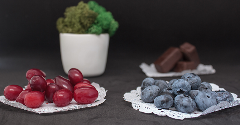
Misleading nutrition claims mask true sugar levels in baby food
5 Jan 2023
Some baby and toddler food and drink products, sweetened with fruit concentrate, contain up to four teaspoons of sugar per serving yet are marketed as having ‘no added sugar’, according to a survey by Action on Sugar.
Read more
Asian beverage brands deal with rising costs
4 Jan 2023
Decreasing bottle sizes or increasing prices? Asian beverage brands are finding “creative approaches” to manage rising costs, according to industry analysts.
Read more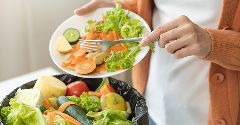
Preserving the freshness of food to fight waste
3 Jan 2023
Several companies are producing products that absorb ethylene, the hormone that causes food to ripen, in attempt to reduce food waste.
Read more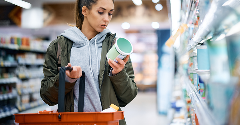
Value-seeking US consumers cut back on food spending
2 Jan 2023
Cheaper items, smaller sizes, and shorter grocery lists: inflationary effects coupled with a global long-term recession are set to continue shaping food spending habits, according to a recent Rabobank report.
Read more
Opportunities grow for lower-caffeine coffee
23 Dec 2022
Many consumers want the mental focus of caffeine without the jitters, prompting a wave of product development such as “half caffeine” ground coffee or ready-to-drink (RTD) cold brew blended with relaxing botanicals.
Read more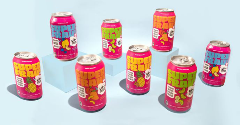
Superfrau upcycles liquid whey for energy drinks
22 Dec 2022
US company Superfrau turns surplus whey into sustainable, upcycled-certified dairy products for the recovery drinks market.
Read more
Malaysian brand Nanka brings jackfruit range to Europe
21 Dec 2022
Malaysian brand Nanka is expanding to new Asian and European markets with its fast and ready-to-eat plant-based products based on jackfruit.
Read more
Is the UK on target to meet its 2025 Plastics Pact?
20 Dec 2022
Major food industry players, including Arla, Kerry, PepsiCo and TerraCycle, have signed the UK’s voluntary Plastic Pact to reduce plastic from the supply chain – but are they on track to meet their targets?
Read more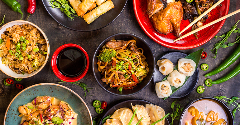
Chinese food brand wants to give customers ‘the full experience’
16 Dec 2022
Food brand Xiao Chi Jie is revamping Chinese cuisine for the modern American consumer. The Washington-based company sells regional Chinese specialties like soup dumplings, noodle kits, and barbeque skewers direct-to-consumer in the US.
Read more